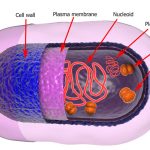A non-replicative plasmid, also known as a non-replicating plasmid or a non-replicating vector, is a type of plasmid that lacks the ability to replicate autonomously within a host cell. Plasmids are small, circular DNA molecules that are separate from the chromosomal DNA in bacteria and other organisms. They can carry genes that provide certain advantages to the host, such as antibiotic resistance or the ability to produce specific proteins.
Replicative plasmids, in contrast, have the necessary genetic elements to replicate independently within host cells, ensuring their inheritance and maintenance during cell division. They typically contain an origin of replication (ori), which serves as the starting point for DNA replication.
Non-replicative plasmids, on the other hand, lack the ori sequence or other essential elements required for autonomous replication. Consequently, they are unable to replicate within the host cells unless they are integrated into the host chromosome or rely on the host’s replication machinery.
Non-replicative plasmids are commonly used as vectors in molecular biology and genetic engineering experiments. They can be introduced into host cells for the purpose of expressing specific genes or delivering genetic material. However, since these plasmids cannot replicate independently, they are typically maintained in the host cells as extrachromosomal elements, and their presence is not heritable through subsequent generations of cells.
Non-replicative plasmids are often used in transient gene expression studies, where the introduced DNA is expressed for a specific period but is not stably maintained in the host genome. They can also be utilized as delivery vehicles for gene therapies, where the introduced genetic material is intended to have a temporary effect.
There is a good example of the use of a non-replicative plasmid which demonstrates some of the benefits but also issues and the considerations needed when using this type of system. The α-amylase gene from Bacillus licheniformis (amy gene) was introduced into a non-replicative plasmid. This was integrated and amplified at a specific site of the B. subtilis chromosome. The intention was to improve enzyme production in B. subtilis.It was only when a better promoter i.e. one with higher promoter activity was inserted upstream of the amy gene coding sequence that there was a subsequent increase in enzyme production (Declerk et al., 1988).
It is important to note that the use of non-replicative plasmids has certain limitations. Since these plasmids are not autonomously replicating, their concentration within host cells may decrease over time or with cell division. This can affect the efficiency and longevity of gene expression or delivery, and careful consideration must be given to the specific experimental requirements when selecting the appropriate plasmid type.
References
Declerck, N., Joyet, P., Le Coq, D., & Heslot, H. (1988). Integration, amplification and expression of the Bacillus licheniformis α-amylase gene in Bacillus subtilis chromosome. Journal of Biotechnology, 8(1), pp. 23-38 (Article).

I liked your article about plasmids and the pKo1 plasmid too.